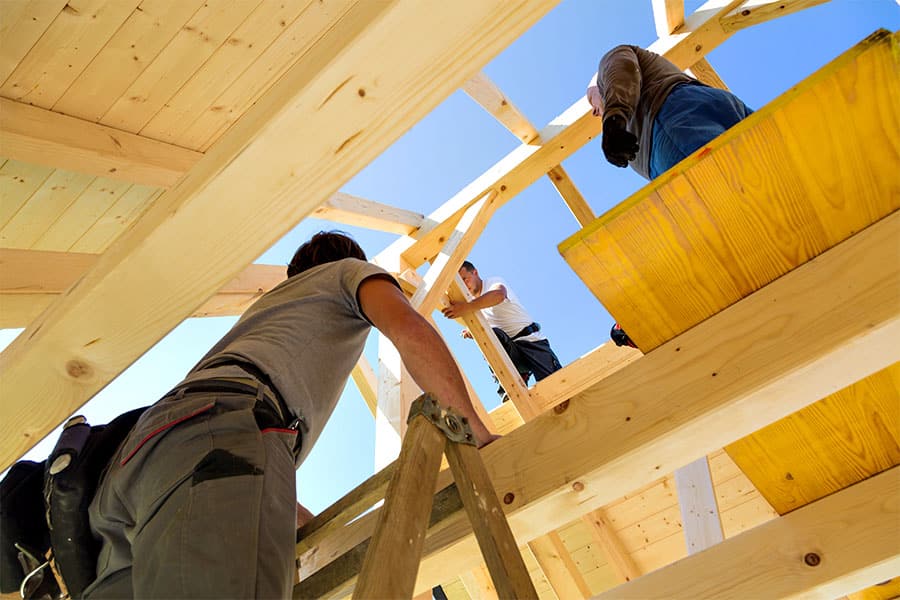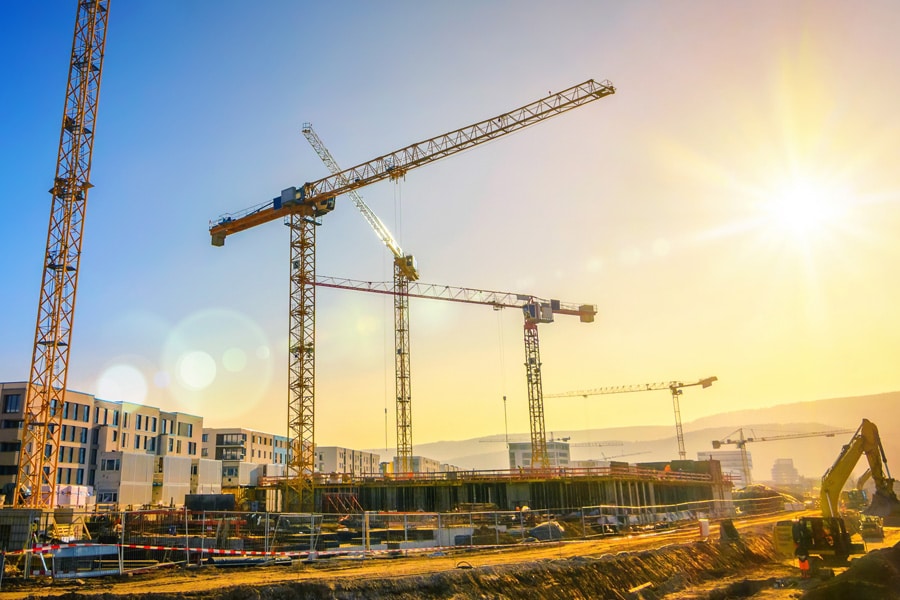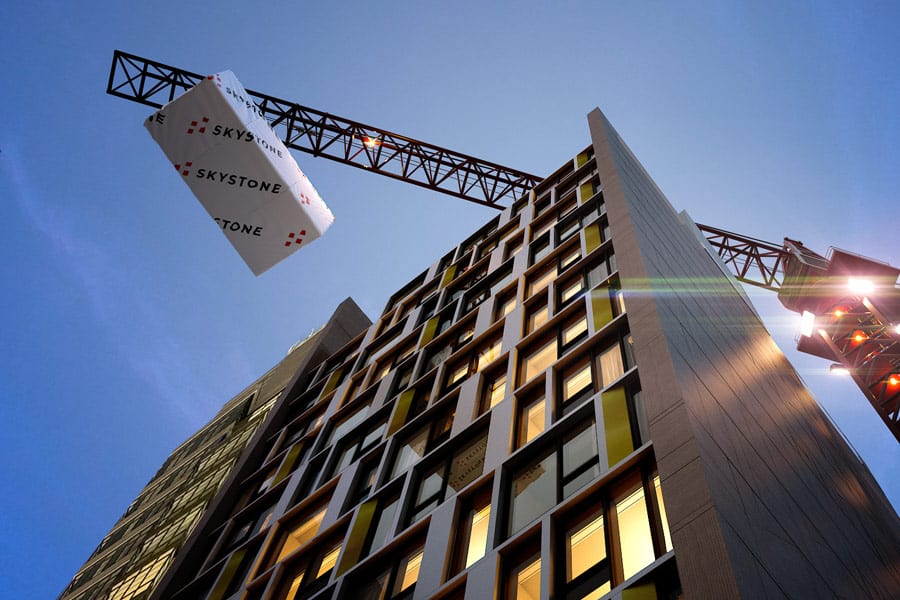Illustrated by Wenjia Tang
Compared to rolling out a strip mall on an empty suburban lot, building in the city is never going to be as easy.
But some cities are harder to build in than others. And with hundreds of years of history and tiny sites surrounded by powerful and, at times, persnickety abutters, Boston can be particularly challenging.
While the historic city is undergoing a massive development boom, it can take years or even decades in some cases for projects to move from the drawing board to the construction site.
The challenges hardly end with the groundbreaking, with careful monitoring needed to prevent damage to neighboring towers or ancient structures—not just from vibrations, but also, in one of the city’s oldest neighborhoods, from dropping ground water levels as well.
While similar problems confront contractors in historic cities along the East Coast and in Europe, these challenges are particularly intense in “Beantown” given the combination of a record level of construction in a relatively small landmass.
“There is no raw land,” said James Kirby, president and CEO of Commercial Construction Consulting in Boston. “Generally, it’s tearing something down that is deemed not to have historic preservation value.”
Big buildings, small footprint
Boston has one of the smallest footprints of any major city, at just 48 square miles. That’s compared to 300 square miles for New York, 468 in Los Angeles and a whopping 600 in Houston.
Despite its size, Boston is home to one of the most intense building booms of any city in the country, with $3.7 billion in construction starts in the first half of 2019, edging out many much larger cities, including Los Angeles and Miami.
The combination of lots of construction crammed into a relatively small amount of space means that building something new in Boston almost invariably involves tearing something else down.
Winthrop Center, a new 52-story tower, is taking shape on a quarter acre lot where a municipal parking garage once stood, while Texas developer Hines is building a tower over South Station, though it is not alone in that endeavor.
Boston Properties, one of the nation’s largest real estate investment trusts (REIT), is constructing a 1.26 million-square-foot mixed use complex over a subway and commuter rail station in the city’s Back Bay neighborhood.
But simply getting to the starting line can sometimes take years, or even decades, as builders grapple with the complexities of building in an already densely built out urban environment with lots of historic treasures sprinkled throughout.
Hines recently began construction on a tower above South Station, a historic 1898 structure that houses the city’s top commuter hub.
But Hines first proposed building the tower in the mid-1980s—only to have its plans repeatedly delayed and derailed.
The FAA raised concerns over the height of the tower—downtown Boston is in the flight path of nearby Logan International Airport—while critics warned of the construction’s impact on the regional commuter rail system.
Millennium Partners, developers of Winthrop Center, faced its share of challenges as well, including concerns raised by historic preservationists on the impact the tower’s shadows would have on Boston Common about a half mile away.
Millennium was forced to both cut the size of the tower and reconfigure its design, while state and city officials moved to exempt it from a state law that effectively bans any new development that would add to the shadows cast on the common.
Getting that crucial final sign-off from city officials can be expensive as well, especially if there is a historic structure next door.
The developer of the 33 Arch Street tower shelled out $750,000 to compensate the nonprofit that owns the Old South Meeting House, a key meeting place in the early days of the American Revolution. The operators of Old South had objected to the shadows cast by the tower on the historic site.
By the final approval stages, the contractor and engineering teams are often involved in getting the project over that final hump, taking part in crucial public hearings and meetings at City Hall.
Challenges during construction
But for the contractors and engineers in charge of building these new projects, nailing down the permits needed to start work signals the beginning of a whole new set of challenges that come with building in cramped, historic and densely built out cities like Boston.
Owners of the towers surrounding the Winthrop Square construction site weighed in with various concerns about the tower proposal during the review process at Boston City Hall.
The owners of a 32-story high-rise, whose foundation was just eight feet from the Winthrop Center excavation site, warned the tower could sink as much as 1.7 inches during the construction process.
To keep tabs on the impact of construction on surrounding towers, the Winthrop Center development and construction team established “a pretty complicated instrumentation and monitoring program,” noted Kirby, whose firm worked on the project.
While the more modern towers near the site, which were built in the 1970s and 1980s, are not necessarily a concern when it comes to damage, there are more than 100-year-old high-rises across Federal Street that need to be watched closely, Kirby noted.
All the abutting buildings are typically photographed beforehand, with monitoring points on the sidewalk to spot any settlement or cracks on the side of the buildings.
“That protects both sides,” Kirby noted.
It’s not just new construction that can be tough in an older city like Boston. Renovations of older, existing buildings bring their own sets of challenges, as Henderson Engineers found in its revamp of a retail building on Newbury Street for Cartier Jewelers in Boston’s 19th century Back Bay.
Water is often a concern in building, with developers typically trying to keep it out of their sites and, in particular, their foundations.
But like other buildings in Boston’s Back Bay, the four-story structure, built in 1910, sits atop underground wood pilings in what was originally a marsh.
If ground water levels drop and leave the wood pilings uncovered, it can lead to disaster, with the foundation literally rotting away.
To ensure the pilings stayed nice and wet, Henderson installed a system—using underground retention tanks—that captured stormwater from the roof and used it to replenish the ground water below, said Brent Felten, technology team leader and principal at the firm.
The engineers also ran into trouble when they took down the ceiling, only to discover a significantly smaller space in which to put new wiring and piping.
“Some of the biggest challenges have to do with the fact that the buildings have such a history and they have living and breathing elements … a life and a history that goes back even centuries in some cases,” Felten said.
Common challenges
The challenges builders face in Boston, though, are not entirely unique.
While the issues may vary, cities with hundreds of years of history can be tough to build in.
While in Boston narrow alleyways often separate older buildings, in New York, it’s not uncommon for an entire block of buildings to have no separation, making renovation that much more complicated.
“Buildings in New York, they are back to back and front to front,” Felten said.
That eliminates the ability to put venting or other mechanical functions out of sight along a back alley. Instead, these functions must be incorporated into the façade, which is further complicated by strict city rules on what elements can and can’t be introduced, Felten said.
Buildings are also linked in other ways.
“In some cases, you have services going through one building to feed a different building next door,” Felten said.
Getting materials and equipment on an off-site can also be particularly difficult, with the need for a staging area at an off-site location, such as a local mall, and to have a well-worked-out logistics plan, noted an academic study on the construction of a pair of office buildings in downtown Krakow, Poland.
Vibrations, noise and logistical challenges were three of the six main factors builders need to take into account when working in densely packed, older cities, the researchers found.
For his part, Kirby said he runs into similar challenges in a range of older cities, recalling a project in Paris where one of the adjacent buildings was a historic 400-year-old waterworks building.
“Tighter sites are part of what comes with the territory,” Kirby said.
















